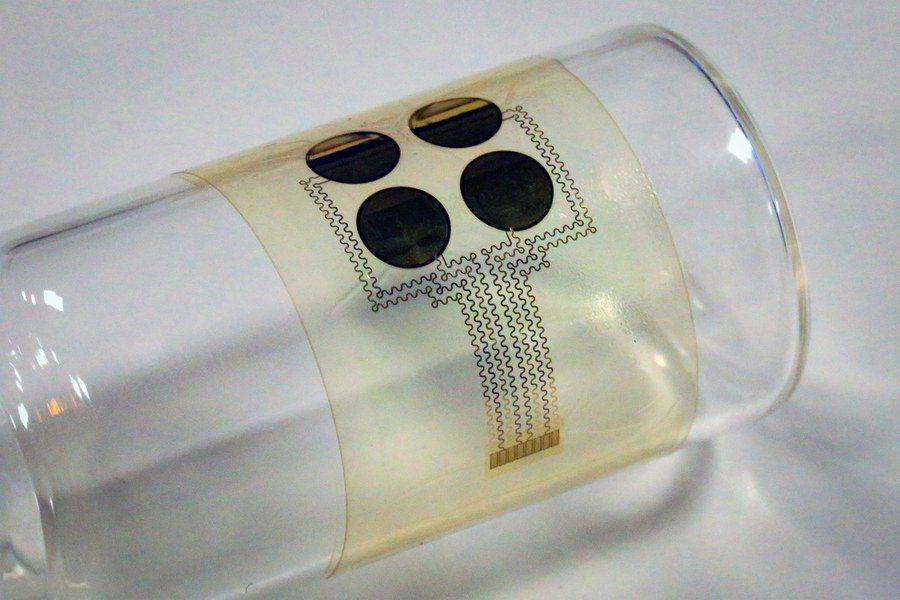A wearable sensor to help ALS patients communicate
26. 10. 2020 | MIT | www.mit.edu
People with amyotrophic lateral sclerosis (ALS) suffer from a gradual decline in their ability to control their muscles. As a result, they often lose the ability to speak, making it difficult to communicate with others.
A team of MIT researchers has now designed a stretchable, skin-like device that can be attached to a patient’s face and can measure small movements such as a twitch or a smile. Using this approach, patients could communicate a variety of sentiments, such as “I love you” or “I’m hungry,” with small movements that are measured and interpreted by the device. The researchers hope that their new device would allow patients to communicate in a more natural way, without having to deal with bulky equipment. The wearable sensor is thin and can be camouflaged with makeup to match any skin tone, making it unobtrusive.

The researchers tested the initial version of their device in two ALS patients (one female and one male, for gender balance) and showed that it could accurately distinguish three different facial expressions — smile, open mouth, and pursed lips.
Read more at MIT
Image Credit: David Sadat
-jk-




